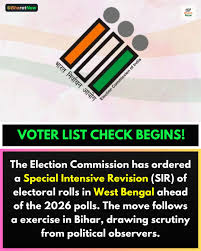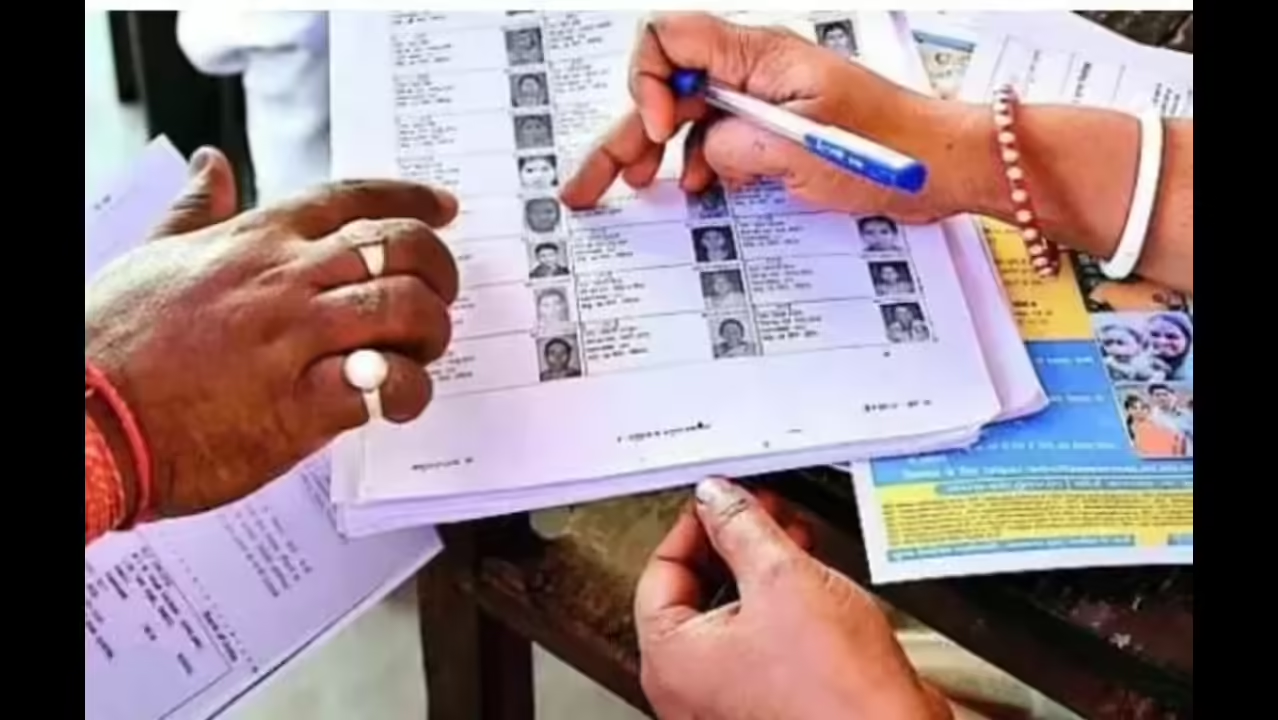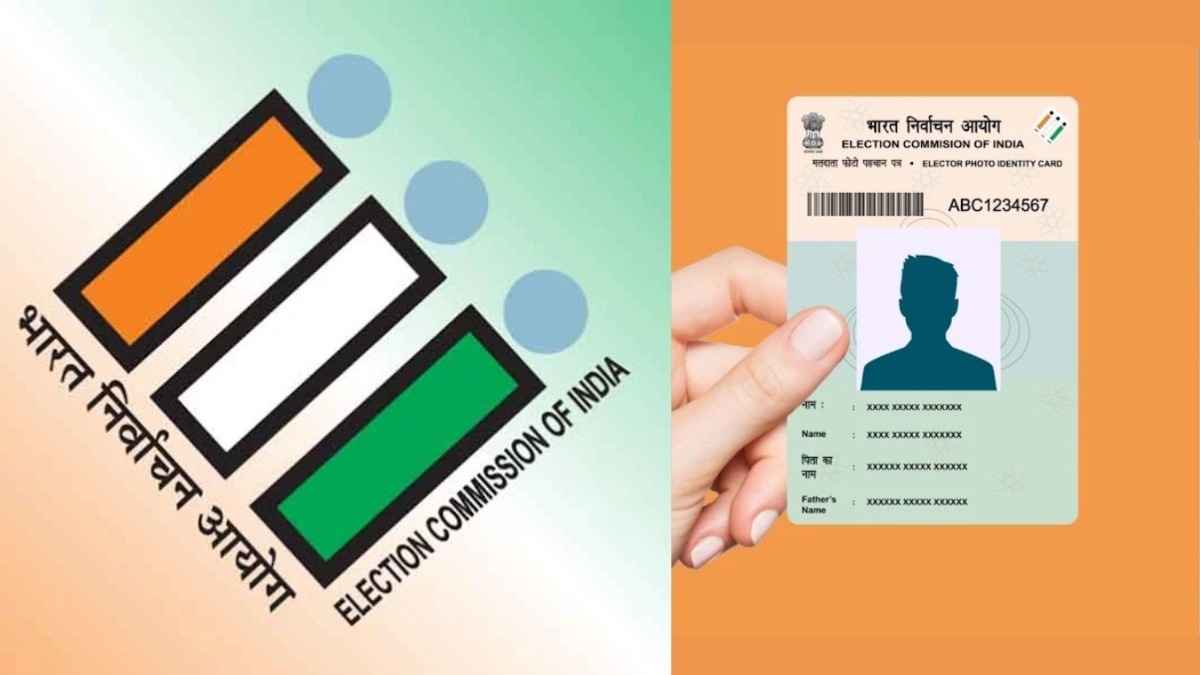Introduction
the Voter List 2003 Uttar Pradesh:- has recently come into renewed focus, especially with the Election Commission of India (ECI) and the Uttar Pradesh Chief Electoral Officer (CEO) launching a Special Intensive Revision (SIR) of electoral rolls. The 2003 roll is being used as a historical benchmark for mapping and verifying long-standing voter entries. This article explores the importance of the 2003 voter list, how to access it, its challenges, and why political parties and citizens are paying close attention to it today.
1. What Is the 2003 Voter List in Uttar Pradesh?
The 2003 voter list of Uttar Pradesh refers to the electoral roll that was last comprehensively revised in the state in 2003. It serves as a historical record of registered voters at that time and is now used as a reference point for updating and verifying the current voter database.
Key points about the 2003 voter list:
- Purpose: It was originally compiled to include all eligible citizens of Uttar Pradesh who were 18 years or older as of 2003.
- Use Today: The list is being used by the Chief Electoral Officer (CEO) of UP during the Special Intensive Revision (SIR) of voter rolls to:
- Identify long-standing voters.
- Remove duplicate, ineligible, or outdated entries.
- Add any missing voters who were not included in earlier rolls.
- Political Relevance: Political parties, like the Samajwadi Party, have requested access to the 2003 voter list to assist in voter verification and outreach programs.
- Access: Citizens can check details from the 2003 list through official PDFs on the UP CEO website or by contacting their District Election Office (DEO).
In short, the 2003 voter list acts as a benchmark for electoral roll accuracy, helping ensure that the voter database is both inclusive and reliable.

2. The Special Intensive Revision (SIR) and Its Connection to 2003
The Special Intensive Revision (SIR) is a focused exercise conducted by the Chief Electoral Officer (CEO) of Uttar Pradesh to update, verify, and clean the electoral rolls. The connection to the 2003 voter list is central to this process.
Key Points:
- Purpose of SIR:
- Ensure that all eligible voters are correctly listed.
- Remove names of deceased voters, duplicates, or ineligible entries.
- Include voters who were previously missing or unregistered.
- Why 2003 Voter List Is Used:
- The 2003 voter list serves as a historical benchmark, allowing election officials to track long-standing voters.
- By mapping the 2003 list against the current rolls, officials can identify discrepancies or missing entries.
- It provides continuity and helps maintain accuracy in regions where voter data might be outdated.
- Procedure:
- Booth-Level Officers (BLOs) visit households with enumeration forms to verify voter information.
- Data from the 2003 list is cross-checked to ensure voters who were registered then are correctly included today.
- The UP CEO has instructed officials to complete this mapping quickly, highlighting the urgency and importance of this task.
- Political and Administrative Significance:
- Political parties, such as the Samajwadi Party, have requested access to the 2003 voter list to ensure that verification and outreach efforts are precise.
- Proper mapping strengthens electoral transparency, prevents fraud, and promotes inclusive voting participation.
In essence, the SIR process uses the 2003 voter list as a foundation to ensure that the current electoral rolls in Uttar Pradesh are accurate, complete, and fair, bridging historical voter data with present-day electoral needs.
3. Why the 2003 Voter List Is Politically and Socially Significant
The 2003 voter list of Uttar Pradesh is not just a historical record; it plays a vital role in ensuring electoral accuracy, political strategy, and social inclusivity. Its significance can be understood from multiple perspectives:
3.1 Political Significance
- Historical Reference for Parties: Political parties, including the Samajwadi Party, use the 2003 voter list to identify long-standing voters and regions where past voter registration may have been incomplete.
- Strategic Planning: Parties rely on historical data to map polling booths and target outreach, ensuring better engagement with eligible voters.
- Election Integrity: By comparing the 2003 list with current rolls, parties can detect discrepancies, duplicate entries, or missing voters, helping prevent electoral fraud.
3.2 Social Significance
- Inclusive Voting: Using the 2003 list ensures that long-time residents who have been registered for decades are not mistakenly removed from voter rolls.
- Correcting Historical Errors: Any omissions or errors in previous lists can be identified and corrected, giving citizens a chance to exercise their right to vote.
- Transparency and Trust: Public access and verification of voter data based on the 2003 list increases citizen trust in the electoral process.
3.3 Role in the Special Intensive Revision (SIR)
- The SIR process leverages the 2003 voter list as a foundation to update current rolls.
- Mapping historical data against modern records helps in:
- Eliminating duplicate or ineligible entries.
- Adding previously missing or newly eligible voters.
- Ensuring that all eligible citizens can participate in elections.

Key Takeaways
- The 2003 voter list serves as a benchmark for accuracy, transparency, and inclusivity.
- It is an essential tool for political parties to strategize and for the Election Commission to maintain credible electoral rolls.
- Socially, it ensures that every eligible citizen has the opportunity to vote, reinforcing democratic values in Uttar Pradesh.
4. How to Access the 2003 Voter List
The 2003 voter list serves as a historical reference for verifying and updating electoral rolls. Citizens and political stakeholders can access this list through official online portals or offline channels.
4.1 Online Access
- Chief Electoral Officer (CEO) UP Website:
- Visit the official website of the Chief Electoral Officer, Uttar Pradesh.
- Navigate to the section for “Electoral Rolls / Voter List PDFs”.
- Select your district and Assembly Constituency (AC) to download the relevant section of the 2003 voter list.
- Example portals:
- CEO Uttar Pradesh
- Some district-specific portals also provide PDFs of electoral rolls.
- Steps for Checking Your Name Online:
- Download the PDF corresponding to your constituency.
- Open the PDF and search for your name using Ctrl + F or manual browsing.
- Verify details such as part number, polling station, and voter ID.
4.2 Offline / Formal Request
- District Election Office (DEO):
- Citizens can request access to the 2003 voter list by visiting their local DEO office.
- Officials can provide a printed copy or assist in checking names directly.
- During Special Intensive Revision (SIR):
- Booth-Level Officers (BLOs) distribute enumeration forms to verify voter data.
- BLOs may use the 2003 voter list to cross-check old records and help citizens update or correct their details.
- Right to Information (RTI) Requests:
- If online or offline access is difficult, citizens can submit a formal RTI application to the Election Commission or DEO to obtain voter roll information.
4.3 Tips for Citizens
- Keep valid ID proof ready (like Aadhaar, Passport, or Voter ID) for verification purposes.
- Ensure your name, age, and address are correct.
- If your name is missing from the 2003 list or the current roll, submit a claim or correction during SIR.
- Check multiple times if your constituency has been reorganized since 2003 to avoid missing your part number.
Key Takeaways
- The 2003 voter list is official and can be accessed online or offline.
- Checking your name early ensures you are included in updated rolls and eligible to vote.
- Using the 2003 list during SIR strengthens accuracy, transparency, and inclusivity in Uttar Pradesh’s electoral process.
5. Challenges and Controversies Surrounding the 2003 Voter List
5.1 Missing Data and Verification Issues
- In some areas, the 2003 voter list is reportedly missing, making verification difficult. Amar Ujala
- In Aligarh, local political leaders have claimed that the election office admitted the 2003 list is “not available” in certain constituencies. Amar Ujala
- Because of the missing data, BLOs and political agents are facing challenges in verifying long-time voter entries and correcting out-of-date information.
5.2 Documentation and Proof of Identity
- While modern voter registration often requires multiple documents, the 2003 list’s original compilation was relatively less stringent in requiring proof of citizenship. The Indian Express
- This has raised concern: some argue that older entries may lack robust verification, and cleaning up the roll now might exclude legitimate voters if historic documentation is missing.
- In response to missing 2003 records, officials in some regions have asked residents to submit Aadhaar cards as proof, which has sparked debate about document acceptability and privacy. Amar Ujala
5.3 Administrative Pressure and Deadlines
- The CEO’s demand to complete mapping within just three days has put significant pressure on district election offices. Hindustan Times
- Officials have warned of strict action if negligence or delay occurs. The Times of India
- Ensuring that door-to-door enumeration, form collection, verification, and data entry happen quickly and accurately is a huge administrative challenge.
6. Impacts of the 2003 Voter List on the Current Electoral Process
The 2003 voter list of Uttar Pradesh serves as a historical foundation that significantly influences the accuracy, integrity, and inclusivity of the current electoral process. Its usage affects multiple aspects of voter management and election planning.
6.1 Improving Accuracy of Voter Rolls
- The 2003 voter list acts as a benchmark to identify long-standing voter entries.
- Cross-referencing old records with current rolls helps remove duplicate or invalid entries, such as names of deceased or relocated voters.
- Ensures that voters who have been registered for decades are not inadvertently excluded from the electoral roll.
6.2 Strengthening Electoral Integrity
- By mapping the 2003 list to modern rolls, election officials can detect inconsistencies or gaps in voter registration.
- Prevents electoral fraud, including multiple registrations or manipulation of voter data.
- Enhances public confidence that the voter list is transparent and reliable.

6.3 Political Strategy and Voter Outreach
- Political parties use the 2003 list to:
- Identify voters in specific constituencies who may have been missed in later rolls.
- Plan Booth-Level outreach during campaigns and verification drives.
- Analyze historical voting patterns for better constituency management.
- Accurate mapping ensures parties can engage with eligible voters effectively.
6.4 Enhancing Inclusivity
- Helps to add previously unregistered voters, such as those who reached voting age after 2003 but whose names may have been missed in later updates.
- Provides an opportunity to correct past errors, ensuring all eligible citizens are able to vote.
- Encourages maximum voter participation in the democratic process.
6.5 Facilitating the Special Intensive Revision (SIR)
- The SIR process uses the 2003 list as a reference to guide door-to-door verification.
- Ensures that enumeration forms capture both historical and current voter data accurately.
- Helps the Election Commission of India maintain an updated and error-free electoral roll across Uttar Pradesh.
Key Takeaways
- The 2003 voter list strengthens accuracy, transparency, and integrity in the current electoral process.
- Ensures that both long-standing and newly eligible voters are included.
- Plays a critical role in political planning, citizen trust, and fair election practices.
- Forms the foundation for inclusive voter participation and a cleaner, more reliable electoral roll.
7. How Voters Can Participate in the Revision Process
The Special Intensive Revision (SIR) of electoral rolls in Uttar Pradesh provides an opportunity for citizens to actively verify, update, or correct their voter information. Participation ensures the accuracy and inclusivity of the voter list.
7.1 Check Your Name in the Voter List
- Online Access:
- Visit the CEO Uttar Pradesh website and navigate to the voter services section.
- Download the 2003 voter list PDF or check your name using your Assembly Constituency (AC) and part number.
- Search for your name and verify details such as voter ID, polling booth, and address.
- Offline Access:
- Visit your District Election Office (DEO) to view the 2003 voter list.
- Booth-Level Officers (BLOs) can assist you in verifying your details at your residence.
7.2 Fill the Enumeration Form
- During the SIR, BLOs visit households to distribute enumeration forms.
- Citizens should carefully fill in all required details, including:
- Full name
- Date of birth
- Current address
- Voter ID (if available)
- The form can be used to add missing voters, correct errors, or update details like name spelling and address changes.

7.3 Provide Valid Documentation
- To ensure your details are accepted, provide proof of identity and address, such as:
- Aadhaar Card
- Passport
- Driving License
- Ration Card
- This is especially important in constituencies where 2003 voter list data may be incomplete or missing.
7.4 Submit Claims or Objections
- After the draft voter list is published, citizens can:
- File a claim to include their name if it is missing.
- Raise an objection to remove or correct incorrect entries (e.g., duplicates, deceased voters).
- Claims and objections can be submitted:
- Online via the CEO UP portal
- Offline at the DEO or through BLOs
7.5 Follow Up and Stay Informed
- Keep track of announcements from your local DEO or BLO regarding deadlines and revisions.
- Make sure to verify that your changes are reflected in the updated voter list before elections.
Key Takeaways
- Active participation ensures accuracy, transparency, and inclusivity in electoral rolls.
- Checking your name, submitting claims, and providing correct documents protects your right to vote.
- Using the 2003 voter list as a reference allows both citizens and election officials to maintain a reliable voter database.
- Participation strengthens democracy by ensuring that every eligible voter is counted.
8. Risks, Criticisms, and the Way Forward
While the 2003 voter list serves as a valuable reference for updating electoral rolls in Uttar Pradesh, there are certain challenges and criticisms associated with its use. Understanding these risks is essential for ensuring accuracy, transparency, and inclusivity in the electoral process.
8.1 Risks and Challenges
- Historical Inaccuracy
- Some entries in the 2003 list may be outdated or incorrect, due to less stringent verification procedures at that time.
- Errors in names, addresses, or age could lead to mistaken exclusions or duplications in the updated voter list.
- Missing Data
- In several constituencies, parts of the 2003 voter list are reportedly unavailable, making cross-verification difficult.
- This creates administrative challenges for Booth-Level Officers (BLOs) during the Special Intensive Revision (SIR).
- Exclusion Risk
- Citizens whose names were omitted in 2003 or who have changed addresses may face the risk of being excluded from the current electoral roll if verification is not carefully managed.
- Administrative Pressure
- The CEO UP has imposed tight deadlines for mapping 2003 data to current rolls, which may strain resources and increase the likelihood of errors or oversight.
- Privacy and Documentation Issues
- Some voters may be asked to submit documents like Aadhaar to verify their details, raising concerns about data privacy and accessibility.
8.2 Criticisms
- Transparency Concerns: Citizens and political parties demand greater clarity on how the 2003 data is being used and who has access to it.
- Political Sensitivities: Some parties argue that selective access to historical data could influence campaign strategies and voter outreach.
- Equity Issues: Voters in remote or rural areas may face challenges in accessing or verifying their details due to digital divide or administrative gaps.
8.3 The Way Forward
- Extended Timelines
- Allowing more time for BLOs and election staff to complete verification can reduce errors and ensure thorough coverage.
- Inclusive Documentation Policies
- Accept multiple forms of identity and address proof to accommodate citizens who may not have Aadhaar or modern documents.
- Public Awareness Campaigns
- Inform voters about the SIR process, verification steps, and deadlines to encourage maximum participation.
- Digital Access and Transparency
- Make 2003 voter list PDFs and other reference data easily accessible online while protecting sensitive information.
- Provide online mechanisms for claim submission and corrections to simplify the process.
- Monitoring and Accountability
- Implement a tracking system for claims, objections, and corrections to ensure that changes are properly recorded and verified.
Key Takeaways
- While the 2003 voter list is crucial for accurate and inclusive electoral rolls, risks such as data gaps, historical inaccuracies, and administrative pressure must be addressed.
- The way forward involves extended timelines, inclusive documentation, public awareness, and transparency measures.
- Active citizen participation, combined with careful administrative management, can ensure that UP’s electoral rolls are both reliable and democratic.
Conclusion
The 2003 voter list of Uttar Pradesh has emerged as a critical tool in the ongoing electoral roll revision. Used as a baseline in the 2025 SIR, it not only helps identify long-term voter entries but also ensures that the electoral process remains inclusive, transparent, and accurate. For voters, political parties, and election officials alike, this historical list provides a foundation for building a more reliable and accountable voter database. As citizens participate actively in this process, they contribute not just to their voting rights, but to the very strength of democracy in Uttar Pradesh.


 Watch
Watch
 CASUAL WEAR
CASUAL WEAR